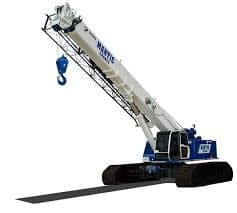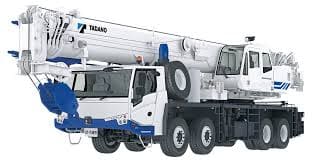
Truck Cranes PDF Manuals list
Features of Truck Cranes
Above on the page a list of Truck Crane Manuals PDF, Electric Wiring Diagrams, Spare Parts Catalogs & Error Codes DTC.
Truck cranes are self-propelled lifting equipment designed to lift and move loads.
The machines combine excellent maneuverability, significant speed of movement and high load capacity.
Truck cranes are based on the chassis of an existing fleet of trucks or special cross-country chassis.
Truck cranes are used in the construction, utilities, agriculture and manufacturing industries to load and unload the following jobs:
1. construction of buildings and structures;
2. dismantling and reconstruction of facilities;
3. construction of bridges and viaducts;
4. arrangement of roads and sidewalks;
5. loading of agricultural machinery;
6. laying of engineering communications, oil and gas pipelines;
7. production of building materials and fabrication of metal structures.
All truck cranes are mobile. This means that the machine moves independently to the place of work.
When choosing a truck crane, you should focus on the following characteristics:
1. allowable lifting weight;
2. lifting height, depending on the type and length of the boom;
3. outreach, which is the distance from the load to the axis of the center of gravity of the crane;
4. speed of lifting or lowering loads - the movement of the load vertically per unit of time (meter / min);
5. load moment, which is determined by multiplying the length of the boom by the lifting capacity.
Other important indicators include: chassis transport speed, maximum power load, minimum turning radius, vehicle engine and crane power plant
All truck cranes are mobile. This means that the machine moves independently to the place of work.
When choosing a truck crane, you should focus on the following characteristics:
1. allowable lifting weight;
2. lifting height, depending on the type and length of the boom;
3. outreach, which is the distance from the load to the axis of the center of gravity of the crane;
4. speed of lifting or lowering loads - the movement of the load vertically per unit of time (meter / min);
5. load moment, which is determined by multiplying the length of the boom by the lifting capacity.
Other important indicators include: chassis transport speed, maximum power load, minimum turning radius, vehicle engine power and crane power plant.


